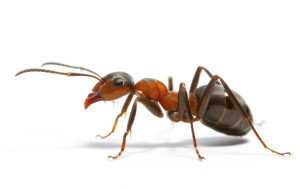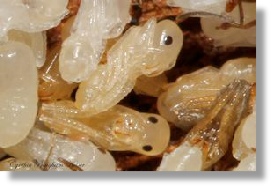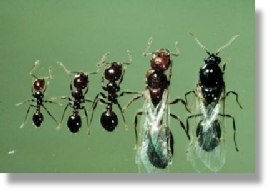 Ants are the most common pest problem reported, especially in the summer months! These tiny invaders will enter your home looking for moisture and an accessible food source. Some ants can cause damage to wood and fabrics. Others might contaminate food and bite or sting. Usually when there is one ant there are many more nearby. Ant colonies can be made up of thousands of ants so these little scavengers can be a difficult for homeowners. If not treated correctly, ants will just keep coming back!
Ants are the most common pest problem reported, especially in the summer months! These tiny invaders will enter your home looking for moisture and an accessible food source. Some ants can cause damage to wood and fabrics. Others might contaminate food and bite or sting. Usually when there is one ant there are many more nearby. Ant colonies can be made up of thousands of ants so these little scavengers can be a difficult for homeowners. If not treated correctly, ants will just keep coming back!
Quick Facts
- There are more than 12,000 species of ants all over the world.
- An ant can lift 20 times its own body weight. If a second grader was as strong as an ant, he would be able to pick up a car!
- Some queen ants can live for many years and have millions of babies.
- Ants don’t have ears. Ants “hear” by feeling vibrations in the ground through their feet.
- When ants fight, it is usually to the death!
- When foraging, ants leave a pheromone trail so that they know where they have been.
- Queen ants have wings, which they shed when they start a new nest.
- Ants don’t have lungs. Oxygen enters through tiny holes all over the body and carbon dioxide leaves through the same holes.
- When the queen of the colony dies, the colony can only survive a few months due to the fact that queens are rarely replaced and the workers cannot reproduce.
Ant Life Cycle
Ants has four distinct and very different life stages: egg, larvae, pupae and adult. This is known as complete metamorphosis. It generally takes from several weeks to a few months to complete the life cycle, depending upon the ant species and environmental factors.
Eggs
A female ant that successfully mates with a male ant will become a queen ant that lays eggs. Fertile queens select a sheltered place to begin a nest and lays their eggs. Ant eggs are very small – only about a half of a millimeter in diameter – and are oval, white, and transparent.
Larvae
After about 1-2 weeks in the egg stage, a grub-like, legless ant larvae hatches. This stage has a voracious appetite so the adult ants spend much of their time feeding the larvae with food and liquids they digest and regurgitate.
After the larvae molts and shed their skin, they change into the pupal stage. Pupae appear somewhat like adults except their legs and antennae are folded and pressed against the pupal body. Initially, ant pupae are white, but slowly become darker in color as they age. Depending upon the ant species, pupae may be housed in a protective cocoon.
Once the pupal stage is complete, the adult ant comes on the scene. At the time of emergence, the adult ant is fully grown, but darkens in color as it ages. Adult ants are one of three different colony castes; queens, workers, or males. Queens are fertile females that lay all the eggs in a colony. Workers are females that do not reproduce, but instead gather food, feed the larvae, and clean the nest. It is this worker caste that is seen foraging around for food or defending the colony from intruders. Finally, the male ants are winged, but their only job is to mate with the queens during the swarming process.
Nature and Behavior
Because of the nature and behavior of these creatures, ants are very hard to control. Here are some known ant behaviors that often leave homeowners feeling helpless. Leaving a scent trail to allow others to follow them to a food source and the ability to enter through the tiniest cracks into the home are just a few of the many behaviors that make ants hard to control.
- Entry: Ants can enter through even the tiniest cracks, seeking water and sweet or greasy food substances in the kitchen pantry or storeroom areas.
- Scent trails: Ants leave an invisible chemical trail which contains pheromones for others to follow once they locate the food source.
- Nest locations: They can nest about anywhere in and around your house; in lawns, walls, stumps, even under foundations.
- Colony size: Colonies can number up to 300,000 to 500,000, and whole colonies can uproot and relocate quickly when threatened.
- Colony Lifetime: A colony can live a relatively long lifetime. Worker ants may live seven years, and the queen may live as long as 15 years.
Do-It-Yourself Ineffectiveness
Because of the above behaviors, most do-it-yourself ant control approaches kill only the ants you see. Some truly effective treatments can penetrate and destroy nests to help prevent these pests from returning. However, home remedies do not account for the fact that different kinds of ant infestations require different treatments. That is why seeking professional help is important when you start seeing ants in your home. Remember that if you see 2 or 3 ants, there are thousands more somewhere close by. If you need professional help with ant infestation, do not hesitate to call ProActive Pest Management at (630) 451-8101.


